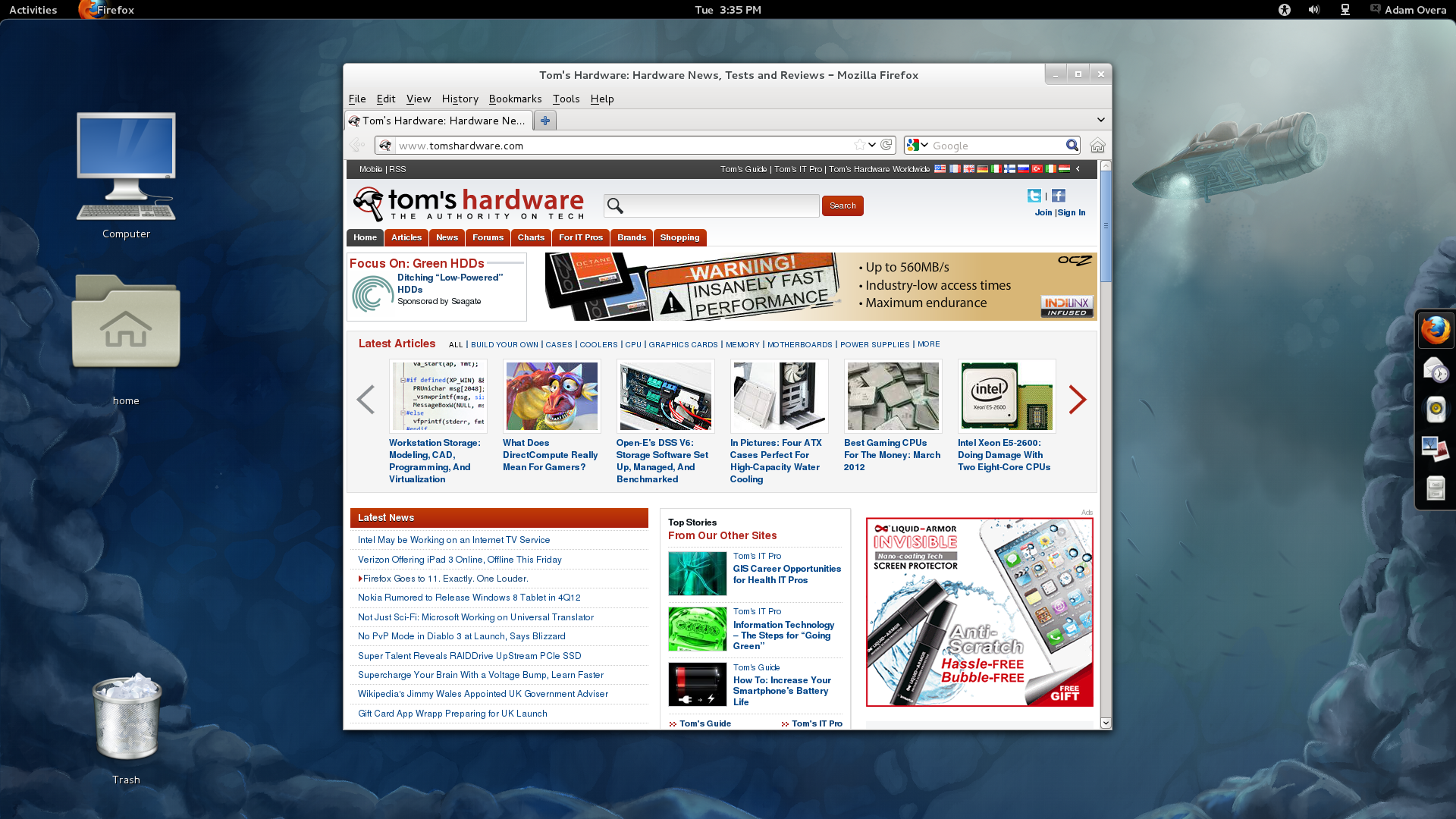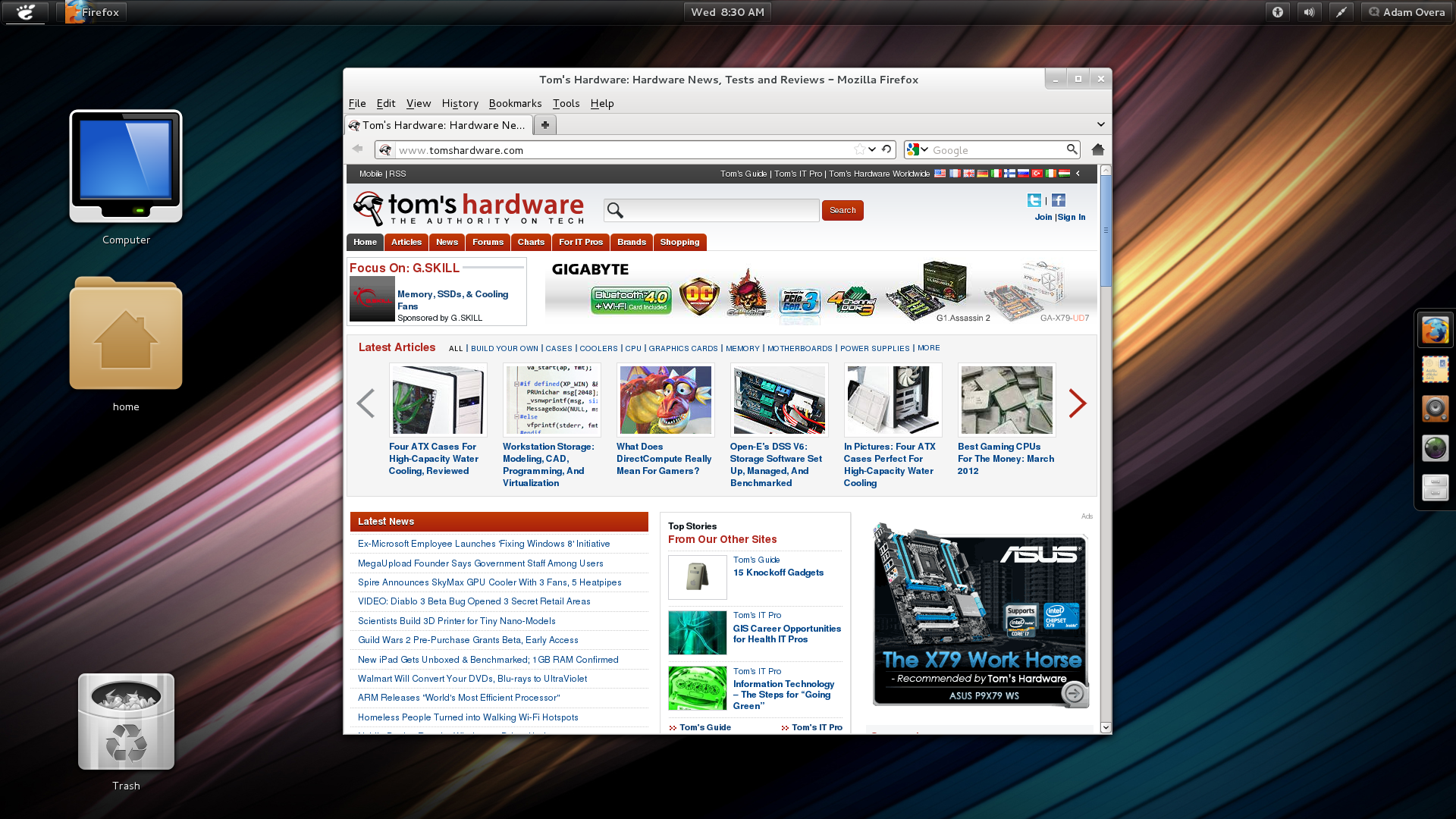Fedora 16 And GNOME Shell: Tested And Reviewed
Ubuntu and Mint don't want it; Linus called it an “unholy mess.” While most other distros are passing up or postponing GNOME Shell, Fedora is full steam ahead. Does Red Hat know something the rest of us don't? Or is GNOME 3 really as bad as everyone says?
Fixing GNOME 3
When the GNOME Project describes the extensions system as “powerful,” it isn't blowing smoke. With extensions, the issues that plague a standard install of GNOME 3 can almost be completely fixed. The table below lists our issues with the GNOME 3 experience shipped in Fedora 16, and what tweaks and/or extension are needed to rectify them:
| Issue | Fix |
|---|---|
| No On-screen Task Management | Dock extension |
| No Functional Desktop | GNOME Tweak Tool (Desktop page) |
| No Advanced Virtual Desktops | Auto Move Windows extension |
| No Trash | GNOME Tweak Tool (Desktop page) |
| No Minimize/Maximize | GNOME Tweak Tool (Shell page) |
| No Hibernate | Alternative Status Menu extension |
| No Customization | User Theme extension, and GNOME Tweak Tool (Theme/Shell pages) |
| Extra Effort | Largely negated when using above fixes |
By enabling one or more of the above fixes, the GNOME Shell goes from this:
To this:
What you see in the screen shot above is a GNOME Shell with an on-screen task list provided by the Dock extension. A functional desktop is created by using the GNOME Tweak Tool. Advanced virtual desktop rules are available via the Auto Move Windows extension. The Trash bin is restored to the desktop. And the minimize/maximize buttons are brought back by using the GNOME Tweak Tool.
There is no more need to hold down the Alt key or log out before restarting or shutting down the computer. Moreover, hibernation is also available through the Alternative Status Menu extension.
It already looks pretty good, and it's functional. But let's do some customization to make GNOME Shell really pop. Beautify it with a high-def wallpaper, the Faenza icon set, and the malys shell theme:
Now that's what an end-user desktop distro can (and should) look like. It's something with which you can work, and it should have been available right off the bat.
Get Tom's Hardware's best news and in-depth reviews, straight to your inbox.
While this amount of tweaking is pretty ridiculous, especially after having to first deal with Fedora's limitations, it shows that GNOME 3 isn't a total wreck. Before you completely give up on it, just remember that the GNOME Tweak Tool and shell extensions can turn GNOME 3 into an actual upgrade.
If you still don't like anything about GNOME 3's direction, you can also mimic the GNOME 2 UI...


